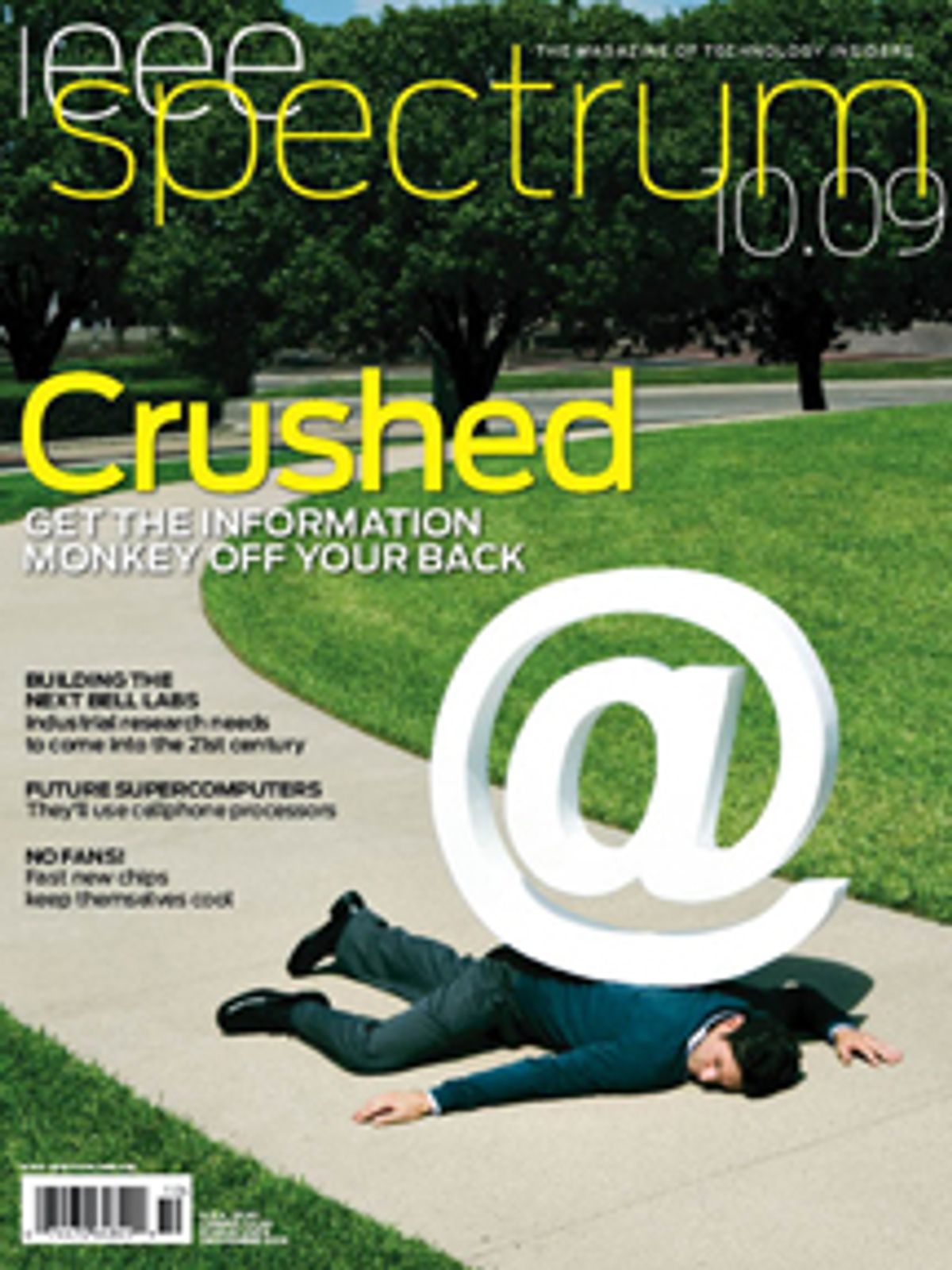After I published my Spectrum article on Infoglut, I received many responses through a variety of online channels. That's one of the perks in being an active cyber-citizen: you get to meet interesting people. However, a number of respondents focused on the same complaint: the article, they claimed, was far too lengthy, thereby itself contributing to Information Overload.
This statement puzzled me, because I wrote the article in close cooperation with Spectrum’s capable editors, and in conformance with their expectations. My curiosity piqued, I pulled out some back copies of the magazine from my shelf and counted the pages. Turns out that my article is 3.5 printed pages long, well within the norm for Spectrum feature articles. In fact I recently blogged about the shortening of articles in printed magazines over the decades, using Scientific American as an example; that magazine’s features went down from 12 content pages per article in the sixties to 8 pages in 2009. My 3.5 pager would count as positively brief in Sci Am even today... So what is going on?
What made it even weirder is that looking at the article in the printed magazine, it did not appear particularly long; but even I had to admit that the online version, which, it turns out, is the version the complaining readers saw, does seem to go on and on...
Thinking it over, I realized that there is a key difference between reading online and on paper. The information density on paper is certainly greater: lots more can fit—and be consumed—on a printed page than can be put on a screen of the same physical dimensions. The text of my article fills seven vertical “screenfuls” on my 22-inch monitor; it fits on 2.5 double-page spreads of Spectrum, even though each such spread is a bit smaller than the monitor’s area. This means that I could take in the printed article in three “gulps”, versus seven online. Even more important, the printed version is random access; I can move my eyes across the pages and home in on what I want, taking my cues from the layout, section header typography, and images. The long-scrolling online version is serial access: you need to scroll patiently through uniform-looking text blocks to find anything, and your best strategy would be to read it start to finish serially to see what’s in it. That’s why we use books, and not the scrolls the ancients had: flipping through pages is much more efficient if you plan to skim.
This came as a surprise to me: I'm used to considering online reading as a valid alternative to print (until it comes to snuggling up in bed with a good novel, at any rate). Online has its advantages—searchability being a major one—but in an age of impatience, Gutenberg’s good ol’ system has its benefits as well!
Nathan Zeldes blogs on Information Overload here.
Tekla S. Perry is a senior editor at IEEE Spectrum. Based in Palo Alto, Calif., she's been covering the people, companies, and technology that make Silicon Valley a special place for more than 40 years. An IEEE member, she holds a bachelor's degree in journalism from Michigan State University.




